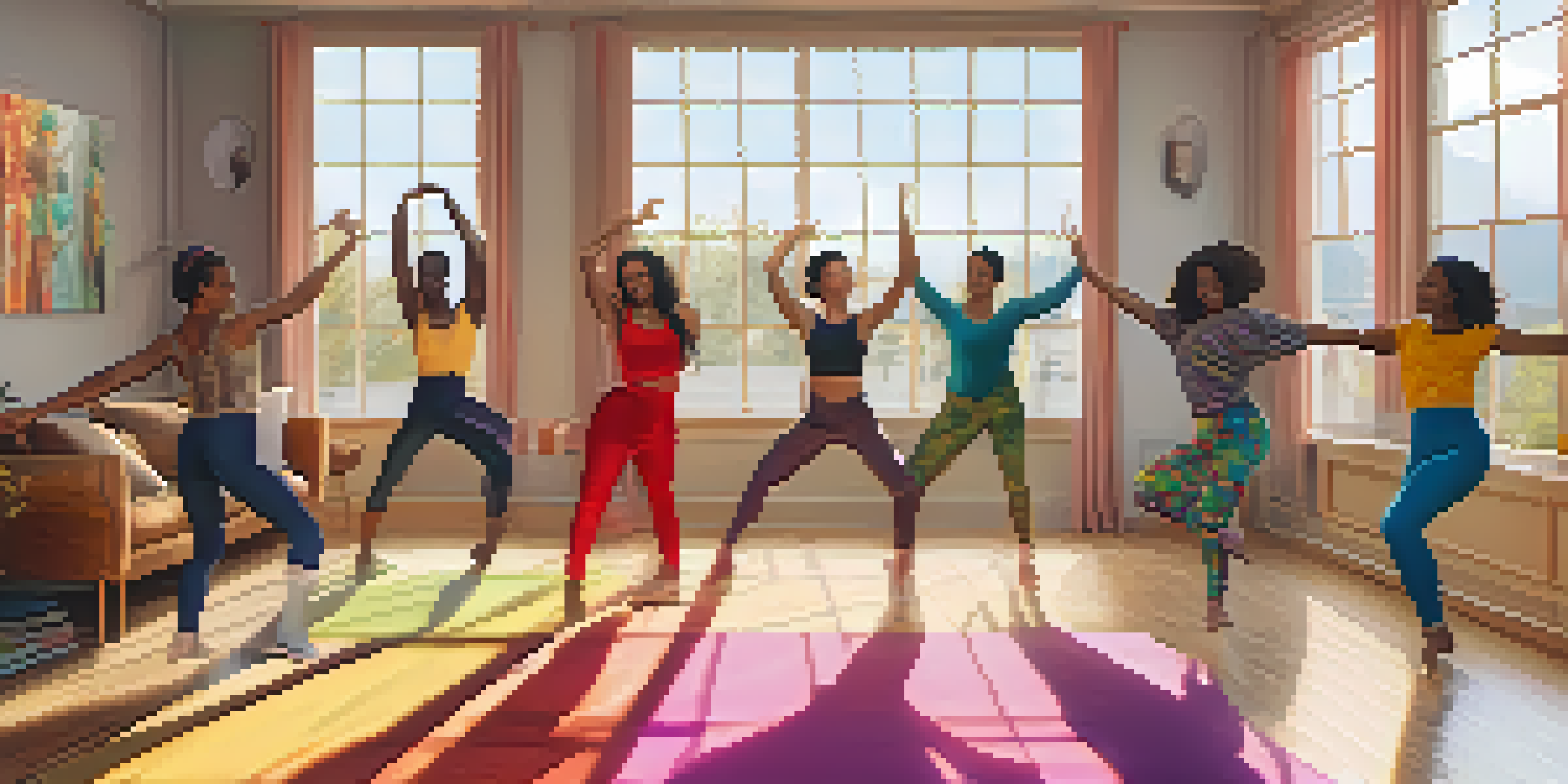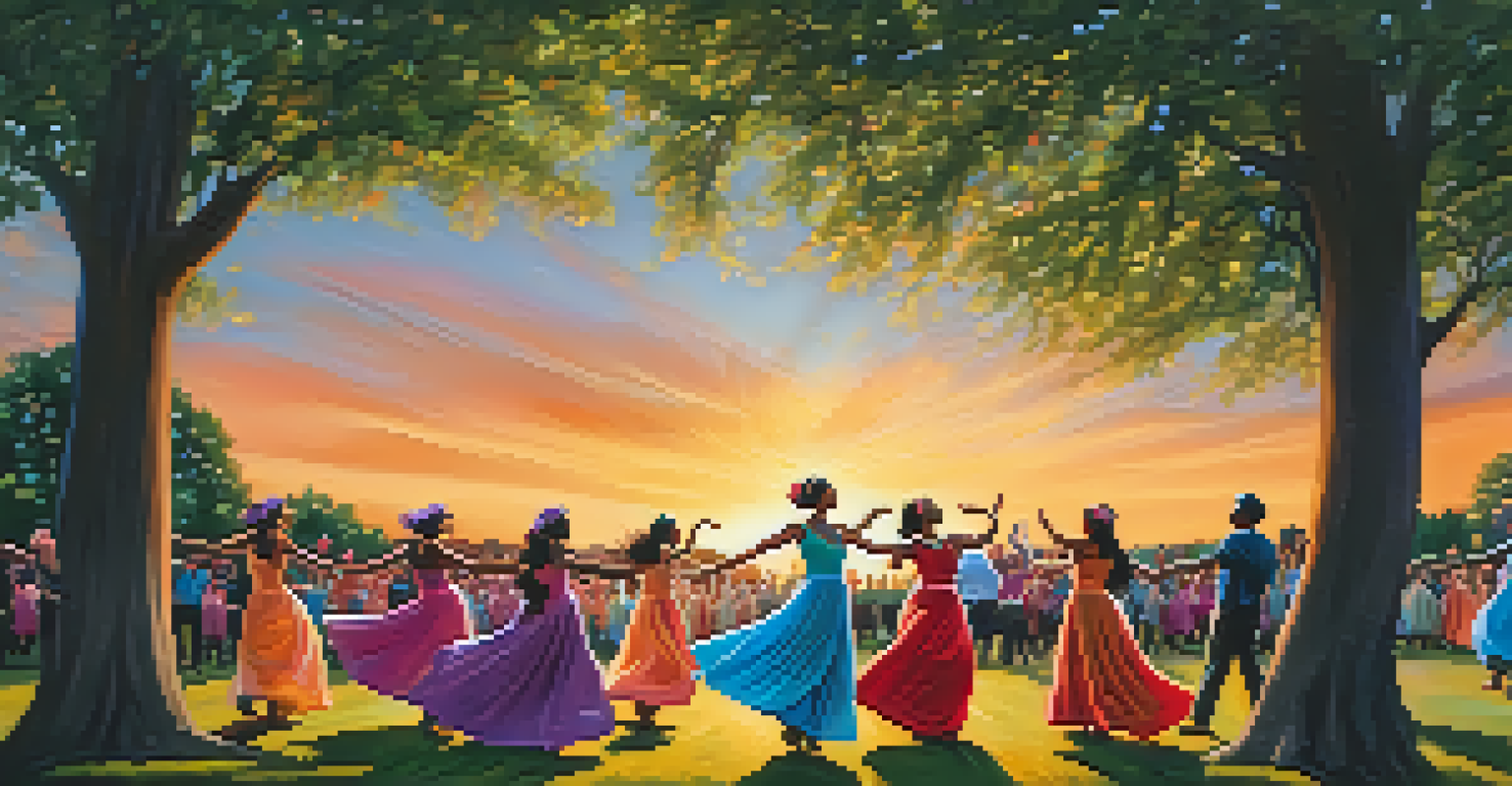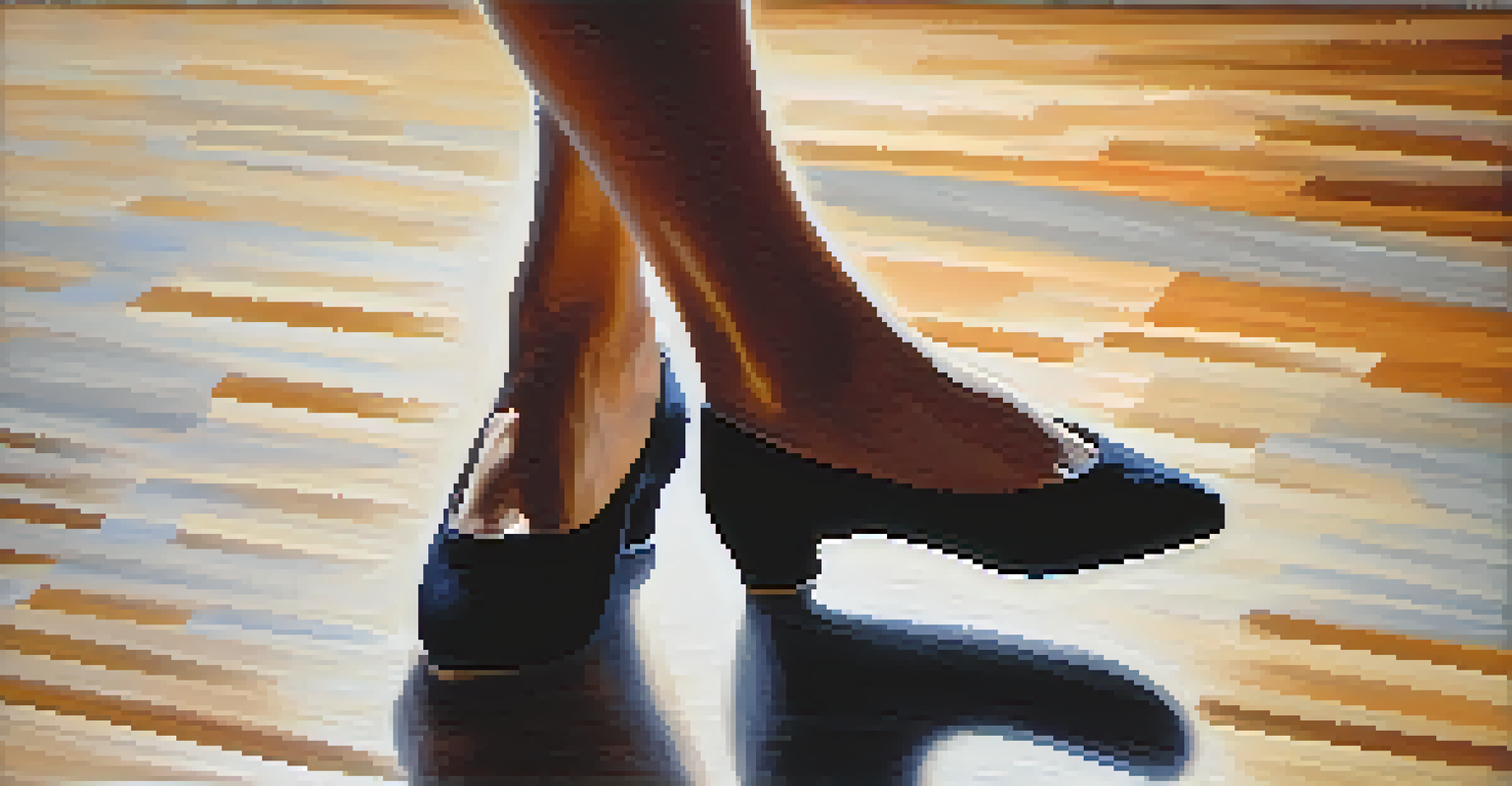Dance in the Pandemic: Movement Amidst Global Crisis

The Rise of Virtual Dance Communities During Lockdowns
As the world faced lockdowns, dancers turned to virtual platforms to connect. Social media and video conferencing became vital tools for sharing choreography and hosting classes. These online spaces allowed dancers to maintain their community spirit, even when physically apart.
Dance is the hidden language of the soul.
Platforms like Zoom and Instagram became lively dance floors, enabling people to participate in classes from the comfort of their homes. Many professional dancers and instructors opened their sessions to the public, fostering inclusivity. This shift not only kept people dancing but also attracted newcomers who had previously been hesitant to join in-person classes.
The creativity displayed by these virtual communities showcased the resilience of the dance world. From flash mobs to online challenges, dancers found innovative ways to engage with one another. This adaptability not only kept the art form alive but also brought joy to many during a challenging time.
Healing Through Movement: Dance as an Emotional Outlet
Amidst the uncertainty and stress of the pandemic, dance emerged as a powerful emotional outlet. Many individuals turned to movement as a way to process their feelings and cope with anxiety. Whether it was through expressive styles like contemporary or energetic forms like hip-hop, dance provided a release.

Research has shown that physical activity, including dance, can significantly boost mental health. The endorphins released during movement help reduce stress and promote a sense of well-being. For countless individuals, dancing became a lifeline, allowing them to express emotions that were often difficult to articulate.
Virtual Dance Communities Thrive
During lockdowns, dancers embraced virtual platforms to connect, share choreography, and foster inclusivity.
Additionally, dance offered a sense of normalcy during chaotic times. Regular practice, even if just in one’s living room, helped establish routines and provided structure to days that felt aimless. This connection to a familiar practice provided comfort and stability in a world turned upside down.
Choreography of Change: New Styles and Trends Emerge
The pandemic catalyzed the emergence of new dance styles and trends, reflecting the changing world. With more people exploring movement at home, genres like TikTok dance challenges gained immense popularity. These short, catchy routines became a fun way for individuals to engage with dance and share their creativity.
The only way to make sense out of change is to plunge into it, move with it, and join the dance.
Dancers began to blend traditional styles with contemporary influences, creating unique fusions that resonated with the current climate. This experimentation allowed for fresh narratives and expressions to surface, mirroring the collective experiences of isolation and resilience. Dance became more than just an art form; it became a reflection of society’s evolving story.
As restrictions eased, many dancers carried these new influences into studios and performances. The pandemic not only changed how dance was practiced but also enriched the art form itself. This evolution highlighted the adaptability of dance and its ability to resonate with cultural shifts.
Bridging Gaps: Dance as a Tool for Connection
Dance has always been a social activity, and during the pandemic, it helped bridge gaps between people. Virtual dance classes and performances allowed individuals from different backgrounds to come together, fostering a sense of global community. This shared experience reminded everyone that, despite physical distance, we are all part of a larger tapestry.
Social media platforms became a melting pot of cultural exchange, where dancers showcased their unique styles and traditions. Viewers could appreciate the rich diversity of dance from around the world, promoting understanding and connection. This cross-cultural sharing created an environment where everyone felt represented and valued.
Dance as Emotional Healing
Dance provided a vital emotional outlet for many, helping individuals process feelings and cope with pandemic stress.
Moreover, initiatives like online dance festivals and collaborative projects brought artists together, showcasing their work and supporting each other. This sense of unity not only uplifted the dance community but also allowed audiences to feel connected to something greater. Dance became a bridge, linking individuals through shared passion and creativity.
From Isolation to Innovation: The Birth of New Collaborations
The pandemic forced many artists to rethink their creative processes, leading to innovative collaborations. With physical performances on hold, dancers found new ways to work with choreographers, musicians, and visual artists online. This shift sparked fresh ideas and inspired unique projects that may not have emerged in traditional settings.
Collaborations often took the form of virtual performances, where artists combined their talents to create mesmerizing content. These projects showcased the beauty of teamwork and the limitless possibilities of creativity, even in isolation. As a result, audiences were treated to a new wave of artistic expression that blended various disciplines.
These partnerships not only enriched the artistic landscape but also helped sustain the livelihoods of many dancers and creators. By embracing technology and innovation, the dance community found ways to thrive amidst adversity. This spirit of collaboration continues to shape the future of dance, reminding us that creativity can flourish anywhere.
The Future of Dance: Lessons Learned from the Pandemic
As we look toward the future, the lessons learned during the pandemic will undoubtedly influence the dance world. The resilience shown by artists and communities has paved the way for a more inclusive and adaptable environment. Dancers have discovered new ways to engage and connect, and these practices are likely to endure.
Hybrid models of teaching and performing have gained traction, allowing for a wider audience reach. The ability to blend in-person and virtual experiences means that dance can be more accessible to those who may have previously faced barriers. This shift encourages a more diverse participation in dance, enriching the art form as a whole.
Innovation Through Collaboration
The pandemic sparked innovative collaborations among dancers and artists, leading to unique projects that enriched the artistic landscape.
Ultimately, the pandemic taught us the importance of community and connection through dance. As we emerge from this global crisis, the focus will likely remain on fostering relationships and celebrating the joy of movement. Dance will continue to be a powerful tool for expression and unity, reminding us of our shared humanity.
Celebrating Resilience: The Enduring Spirit of Dance
The pandemic may have posed unprecedented challenges, but it also highlighted the enduring spirit of dancers worldwide. From professional companies to backyard enthusiasts, the passion for dance persisted despite the odds. This unwavering commitment to movement served as a powerful reminder of the importance of art in times of crisis.
Many dancers found innovative ways to celebrate their craft, whether through outdoor performances or community-driven projects. These efforts not only showcased the resilience of the dance community but also brought joy and inspiration to audiences. The spirit of creativity thrived, proving that dance can adapt and evolve in any circumstance.

As we honor the journey of dance during the pandemic, it’s essential to recognize the collective strength it fostered. The bonds created and the stories shared through movement will linger long after the crisis. In the end, dance remains a vibrant expression of life, capable of overcoming any challenge that comes its way.